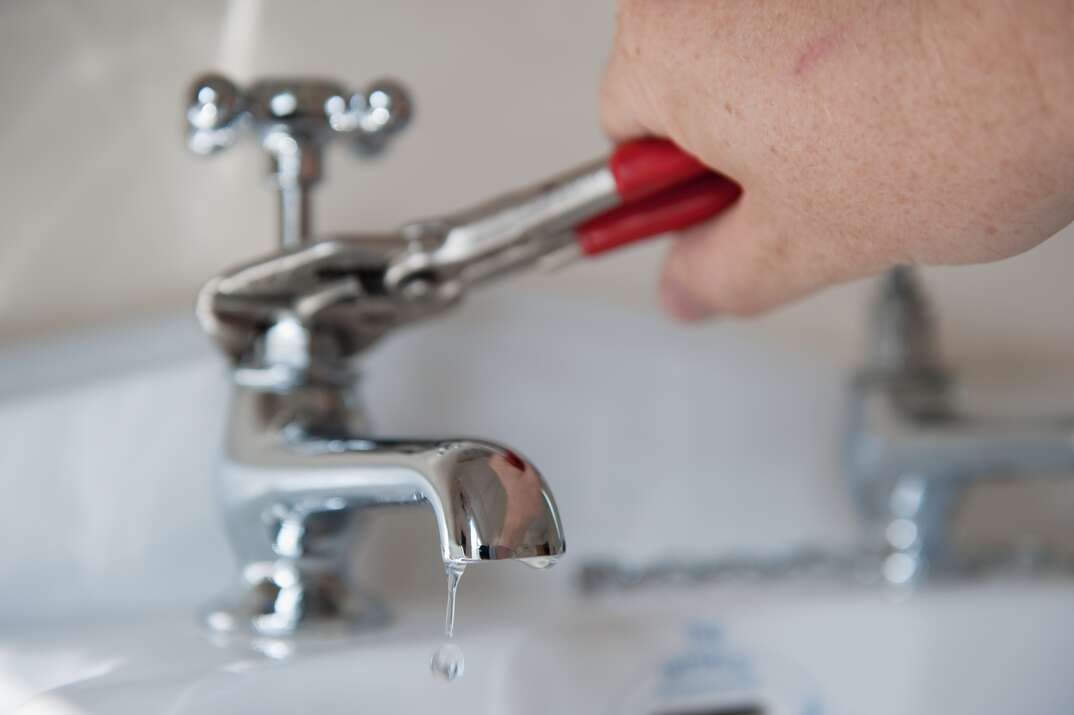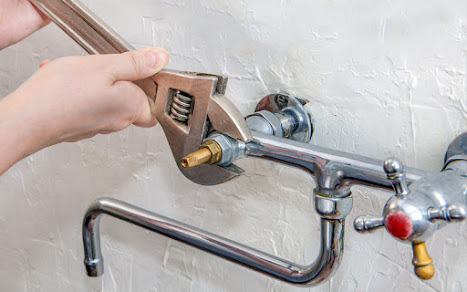Home Appliance Problems: When to Look for a Plumbing Professional's Help for Typical Problems
Home Appliance Problems: When to Look for a Plumbing Professional's Help for Typical Problems
Blog Article
Have you been in search of help around Why Your Water Pipes Are Noisy and How To Shut Them Up?

To identify loud plumbing, it is essential to figure out first whether the unwanted sounds happen on the system's inlet side-in various other words, when water is turned on-or on the drainpipe side. Noises on the inlet side have actually differed causes: extreme water stress, worn valve and also faucet parts, poorly connected pumps or other home appliances, inaccurately positioned pipe fasteners, as well as plumbing runs having too many limited bends or various other constraints. Noises on the drain side normally originate from poor location or, just like some inlet side sound, a format containing limited bends.
Hissing
Hissing noise that happens when a tap is opened a little generally signals excessive water pressure. Consult your regional public utility if you believe this problem; it will have the ability to tell you the water pressure in your area as well as can set up a pressurereducing shutoff on the inbound water supply pipeline if necessary.
Thudding
Thudding noise, typically accompanied by trembling pipes, when a faucet or home appliance shutoff is shut off is a condition called water hammer. The sound as well as resonance are brought on by the resounding wave of stress in the water, which instantly has no area to go. Occasionally opening up a shutoff that releases water promptly right into an area of piping having a limitation, arm joint, or tee installation can create the exact same condition.
Water hammer can usually be cured by installing installations called air chambers or shock absorbers in the plumbing to which the issue valves or faucets are linked. These devices allow the shock wave created by the halted flow of water to dissipate airborne they consist of, which (unlike water) is compressible.
Older plumbing systems might have short vertical sections of capped pipe behind walls on tap competes the exact same function; these can ultimately fill with water, lowering or damaging their performance. The remedy is to drain the water system completely by shutting off the major water shutoff as well as opening all faucets. After that open up the primary supply valve and shut the taps one by one, starting with the tap nearest the shutoff as well as ending with the one farthest away.
Chattering or Shrilling
Extreme chattering or shrieking that occurs when a valve or tap is switched on, and that usually goes away when the installation is opened completely, signals loose or malfunctioning interior parts. The solution is to change the valve or faucet with a brand-new one.
Pumps as well as appliances such as cleaning makers as well as dishwashers can move motor sound to pipelines if they are improperly attached. Connect such items to plumbing with plastic or rubber hoses-never inflexible pipe-to isolate them.
Various Other Inlet Side Noises
Creaking, squealing, scratching, breaking, as well as tapping generally are triggered by the expansion or tightening of pipes, usually copper ones supplying hot water. The noises take place as the pipes slide versus loosened fasteners or strike neighboring house framework. You can typically determine the place of the problem if the pipelines are exposed; simply follow the sound when the pipelines are making noise. More than likely you will uncover a loose pipe wall mount or an area where pipelines lie so near floor joists or various other mounting pieces that they clatter against them. Affixing foam pipe insulation around the pipes at the point of get in touch with need to remedy the issue. Make sure bands and hangers are protected and also provide appropriate support. Where possible, pipeline fasteners must be attached to enormous architectural elements such as foundation walls as opposed to to framing; doing so minimizes the transmission of resonances from plumbing to surfaces that can magnify and transfer them. If affixing fasteners to framing is inevitable, cover pipelines with insulation or other durable product where they contact fasteners, as well as sandwich completions of new fasteners in between rubber washers when installing them.
Fixing plumbing runs that experience flow-restricting limited or countless bends is a last resort that should be taken on only after speaking with an experienced plumbing specialist. Regrettably, this circumstance is relatively common in older homes that may not have been developed with indoor plumbing or that have seen several remodels, especially by amateurs.
Drainpipe Noise
On the drain side of plumbing, the chief goals are to eliminate surfaces that can be struck by falling or rushing water and to insulate pipes to contain unavoidable audios.
In brand-new building and construction, bath tubs, shower stalls, bathrooms, as well as wallmounted sinks and basins should be set on or against resilient underlayments to lower the transmission of audio via them. Water-saving commodes as well as faucets are less loud than standard designs; install them instead of older kinds even if codes in your location still allow utilizing older fixtures.
Drainpipes that do not run vertically to the cellar or that branch right into straight pipe runs supported at flooring joists or various other mounting existing especially problematic sound troubles. Such pipes are large enough to emit significant vibration; they also carry substantial amounts of water, that makes the scenario even worse. In new construction, define cast-iron dirt pipes (the large pipelines that drain pipes bathrooms) if you can afford them. Their enormity includes a lot of the sound made by water going through them. Also, stay clear of directing drainpipes in wall surfaces shown bedrooms and also spaces where people collect. Walls having drains ought to be soundproofed as was defined previously, using dual panels of sound-insulating fiber board and wallboard. Pipelines themselves can be wrapped with unique fiberglass insulation produced the purpose; such pipelines have an invulnerable vinyl skin (often including lead). Outcomes are not always satisfactory.
WHY IS MY PLUMBING MAKING SO MUCH NOISE?
This noise indeed sounds like someone is banging a hammer against your pipes! It happens when a faucet is opened, allowed to run for a bit, then quickly shut — causing the rushing water to slam against the shut-off valve.
To remedy this, you’ll need to check and refill your air chamber. Air chambers are filled with — you guessed it — air and help absorb the shock of moving water (that comes to a sudden stop). Over time, these chambers can fill with water, making them less effective.
You’ll want to turn off your home’s water supply, then open ALL faucets (from the bathroom sink to outdoor hose bib) to drain your pipes. Then, turn the water back on and hopefully the noise stops! If you’re still hearing the sound, give us a call to examine further.
Whistles
Whistling sounds can be frustrating, as sometimes the source isn’t easily identified. However, if you can pinpoint which faucet or valve that may be the cause, you’ll likely encounter a worn gasket or washer — an easy fix if you replace the worn parts!Whistling sounds from elsewhere can mean a number of things — from high water pressure to mineral deposits. Your best plan of attack here is to give our plumbing experts a call. We’ll be able to determine where the noise is coming from and what the cause may be, then recommend an effective fix!
Cracks or Ticks
Cracking or ticking typically comes from hot water going through cold, copper pipes. This causes the copper to expand resulting in a cracking or ticking sound. Once the pipes stop expanding, the noise should stop as well.
Pro tip: you may want to lower the temperature of your water heater to see if that helps lessen the sound, or wrapping the pipe in insulation can also help muffle the noise.
Bangs
Bangs typically come from water pressure that’s too high. To test for high water pressure, get a pressure gauge and attach it to your faucet. Water pressure should be no higher than 80 psi (pounds per square inch) and also no lower than 40 psi. If you find a number greater than 80 psi, then you’ve found your problem!
Next step is to give us a call in order to install a pressure regulator. Trust us, you don’t want to wait to resolve this issue. Not only is the sound annoying, but high water pressure can be destructive to your home — including damaging certain appliances, like your washer and dishwasher.
Dripping
You might be accustom to the slow quiet drip your kitchen faucet makes. You might have even tuned out your bathroom sink dripping and drabbing all day long — but it’s time to find its cause.
A slow drip could signify a variety of easy to fix issues, such as a worn out O ring, or loose part. And by ignoring the drip, you could be wasting up to 2,000 gallons of water a year! So start conserving water — get it looked at ASAP.
https://www.pwessig.com/blog/2018/december/why-is-my-plumbing-making-so-much-noise-/

Do you enjoy more info about Diagnose Unwanted Plumbing Noises? Post a remark down the page. We will be delighted to hear your insights about this write-up. In hopes to see you back again later on. Sharing is good. One never knows, you might be doing someone a favor. Thank you for your time invested reading it.
Book A Service Report this page